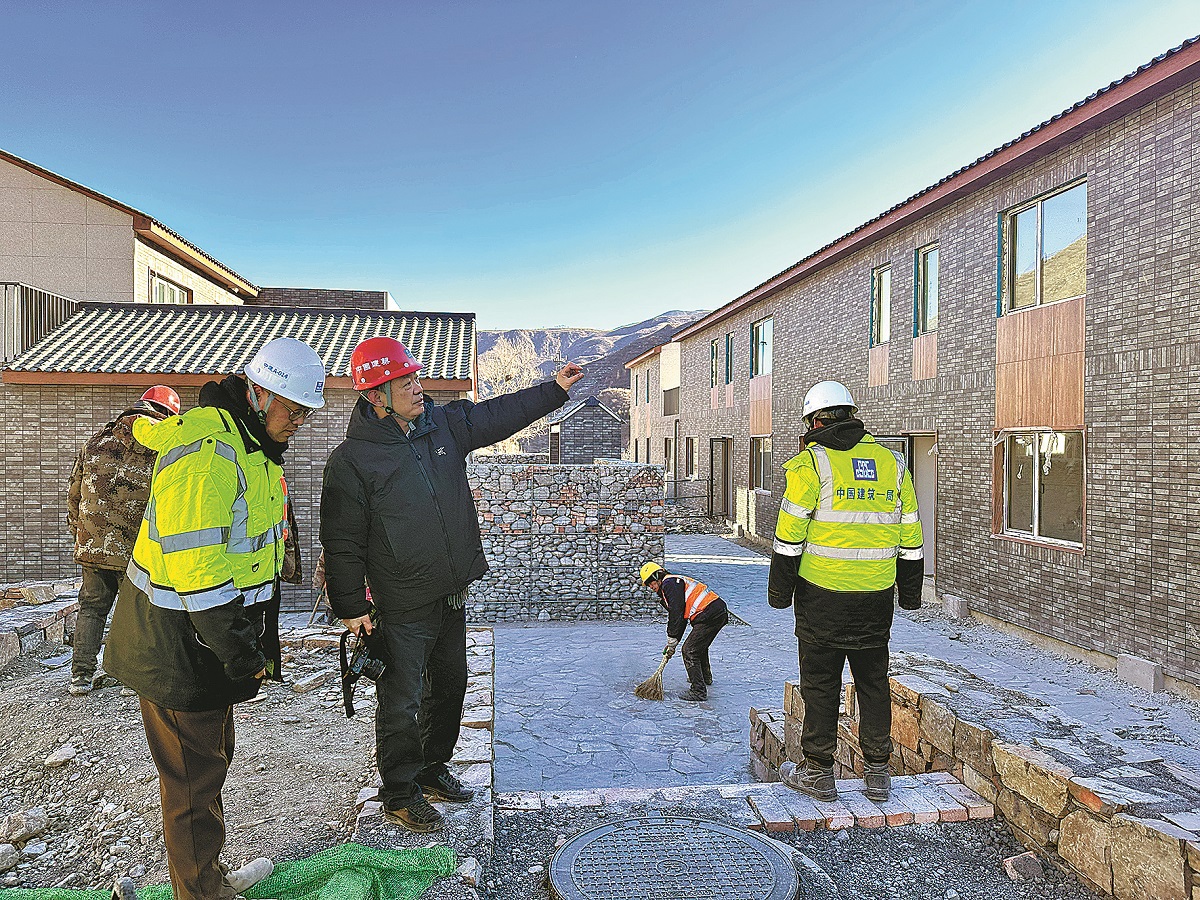Architect breathes new life into destroyed village


On Jan 19, Xue Feng became China's first ever architect to gain the country's highest accolade for engineers, the National Outstanding Engineer Award.
Among Xue's impressive resume of works, including designing the 500,000-square-meter command center at Daxing International Airport and renovating the Wuying Hall Porcelain Gallery in the Forbidden City, is a small, unassuming rural village west of Beijing.
Yanhekou village in Mentougou district was one of many in the area that were destroyed by devastating floods that struck after torrential rains in July last year, leaving its 119 households in ruin.
Xue has headed up a project to rebuild the village and provide its 200 damaged souls with new accommodation in a new community designed with a people-centered approach and demonstrating harmony with nature.
The architect hopes that by the start of the Spring Festival holiday on Feb 10, at least some of the villagers could celebrate in their new homes.
Xue has spent a great deal of time and effort to ensure that Yanhekou is rebuilt in the best way possible, with underfloor heating, courtyards and open-air balconies so the villagers can fully put their lives back together.
"Are the gatehouses and surrounding walls aesthetically coordinated? Is the arrangement of the eaves and guttering neat, both for insulation and aesthetics? Where should greenery be placed along the perimeter walls? These are just some of the questions I must ask myself on this project," Xue said.
"Homes with elderly residents need to have barrier-free pathways constructed, and the brickwork on the perimeter walls must be neatly laid out."
During his visits to Yanhekou, Xue meticulously inspects each of the 96 houses under construction, taking notes and photographs while providing suggestions for further improvements. His detailed recommendations reflect his vision of an ideal future for the villagers, down to every aspect of their daily lives.
"Building houses requires a deep understanding of who is going to live in them. Every detail should be designed to make people enjoy the feeling of being home. What we create for people is not just a house, but their way of life. That's what makes a good house," he said.
In the design of the village, Xue has made sure to preserve natural elements such as the existing walnut trees and even the stones washed down the mountain by the floods. He said the village has to "grow naturally" within its environment.
When designing buildings, Xue immerses himself in the perspectives of the people who will ultimately use them, integrating their needs and living scenarios into the design. He then blends these considerations with the surrounding environment to "nurture" each unique design.
"Architecture does not come from textbooks or blueprints; it cannot be filled with data. It must stem from life," he said.
A notable feature of the design in Yanhekou is the presence of a small door at the rear of each house.
"The front entrance and courtyard are for regular living, while the rear entrance can be used for small businesses," he said.
Facing the street at the back of the houses, Xue has designed a tourist center and a pedestrian shopping street, so the village has the potential to develop into a cluster of tourist accommodations in the future.
The 96 new houses can be developed into 96 small homestays. Located approximately 100 kilometers to the west of Beijing in the mountains, Yanhekou boasts beautiful scenery, making it an ideal destination for weekend getaways, Xue said. Currently, there are no mature residential or recreational facilities in the vicinity. Perhaps the efforts in Yanhekou could mark a promising beginning, he added.
Xue has a unique understanding of architecture.
"Architecture is a service for people," he said. "While large projects are undoubtedly important, after working for decades, you suddenly realize that smaller projects, closely tied to daily life and serving people, are more meaningful."
In recent years, Xue has dedicated more of his time to the renovation of old residential areas in Beijing and the design of barrier-free facilities.
These projects, focused on serving ordinary people, rely heavily on communication. Although Xue typically serves as the chief engineer of a project, he personally communicates with the end-users before each construction begins.
"Users may not understand blueprints, so architects should explain designs in terms they can understand," he said.
During the construction in Yanhekou, villagers often visit. Xue shares his design concepts and the village's character with them, allowing the villagers to experience a glimpse of his vision.
"The houses the villagers used to live in had very small windows," he said. "When we designed the new houses with more and bigger windows, the villagers were concerned — would it be cold in winter? I told them that this allows for air circulation; it will be cool in the summer without the need for air conditioning, and in the winter, there's a natural air heating system, with well-insulated walls to keep them warm. This reassured them.
"In reality, even the most complex designs can be explained to villagers using simple language."
One villager once asked why a vestibule was designed at the entrance, concerned that it might waste space.
Xue responded: "If you come home on a rainy day with muddy shoes, tracking dirt everywhere inside, would your wife be upset? With a vestibule at the entrance, you can change your shoes and separate indoor and outdoor spaces."
For every architectural project he's involved with, Xue likes to take responsibility for every detail.
"Architects should be meticulous and possess excellent management skills. Every process must be meticulously managed; only through detailed design can a good building be achieved. Otherwise, relying solely on deduction, sitting in an office drawing blueprints, may lead to unreasonable details," he said.
As a master Chinese architect, Xue believes that Chinese architecture should possess three important characteristics: warmth, catering to human needs; flavor, creating a lively and communicative community for residents; and a reflection of Chinese aesthetics, embodying the corresponding style.
"China's construction speed is the fastest in the world, and its construction quality is also among the best globally. However, when architects use design to create a better life, that's where the future of Chinese architecture lies. What we ultimately present should be Chinese design, not just simple Chinese construction," he said.
- China pushes transformation, industrialization of patents
- China unveils new standards for funeral services, emphasizing transparency, eco-friendly practices
- China deepens global IP ties with over 80 partners
- World Youth Development Forum highlights youth role in green consumption
- Expanded Shanghai Book Fair to open in August
- Xinjiang opens new civil airport





































